The Fig is a member of the genus Ficus, in the family Moraceae (mulberries). Figs are a delicious fruit that grows in hot climates but can be grown in more temperate areas with extra care. When provided with adequate sunlight, water, and nutrients, the healthy growth rate of Fig trees is more than 1 foot per year. Let’s check out the top 15 steps to boost Fig fruit yield below.
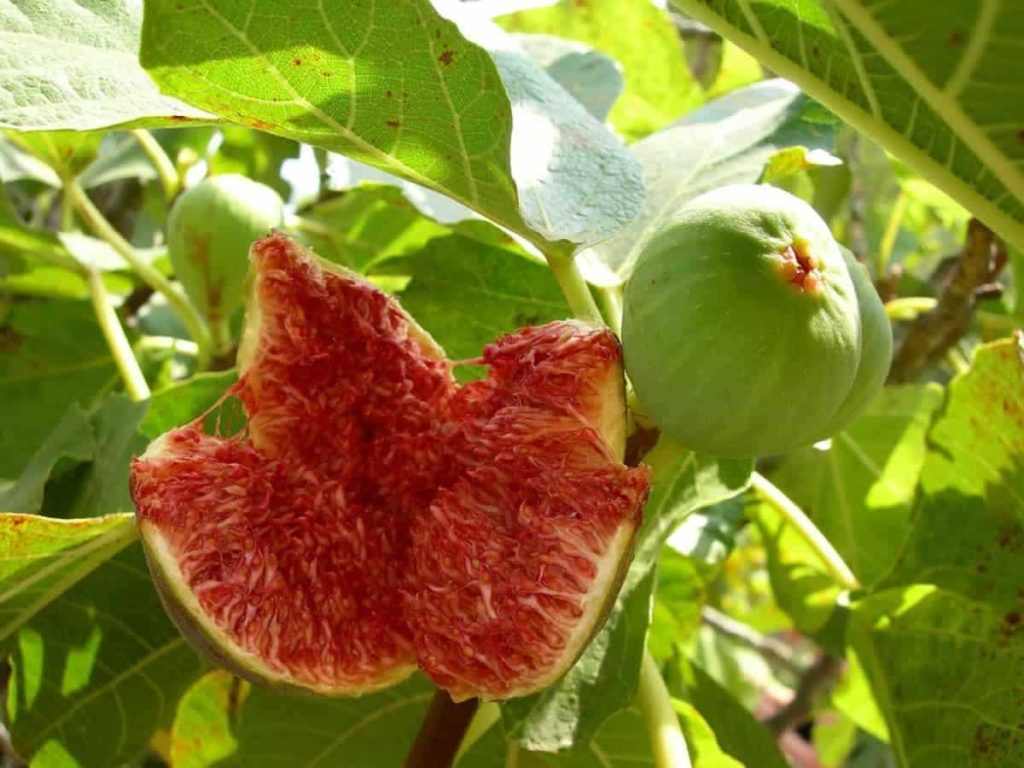
Top 15 steps to boost Fig fruit yield
Step 1: Select the best location for Fig fruit growth
Fig trees require at least 8 hours of full sunlight. It helps rip fruits, reduces the period of moisture after rains, and prevents diseases.
Step 2: Select Fig cultivars
- ‘Brown Turkey’ produces large quantities of medium to large Figs. This type works best in hot climates and tolerates cold temperatures to a great extent.
- ‘Celeste; produces small, sweet, purple Figs. It is one of the hardest varieties for winter.
- ‘Hardy Chicago’ is a harsh winter variety that produces purple, medium-sized Figs.
- The ‘King’ is well adapted to the cold conditions found in the Northwest. It produces medium-sized Figs that are sweet and full of flavor.
- ‘Kadota,’ which produces small to medium-sized fruits. Its Figs are full and sweet, and it is the most canned Fig.
There are more than 600 Fig cultivars, and most commercial production depends on just a few varieties. Some of the major commercial crops are Calimyrna, Adriatic, Mission, Brown Turkey, Desert King, Celeste, and Kadota. The economically valuable Figs are Seyah, Sabz, Payves, Matti, Shah Anjeer, and Kashki. San Pedro Fig produces two crops in each season, and it is thought that the fruit in the first season is usually the fruit but the fruit set in the second season happens through pollination. The desert king Fig variety belongs to this group.
In case you missed it: Fig Farming Project Report (Anjeer), Cultivation Economics
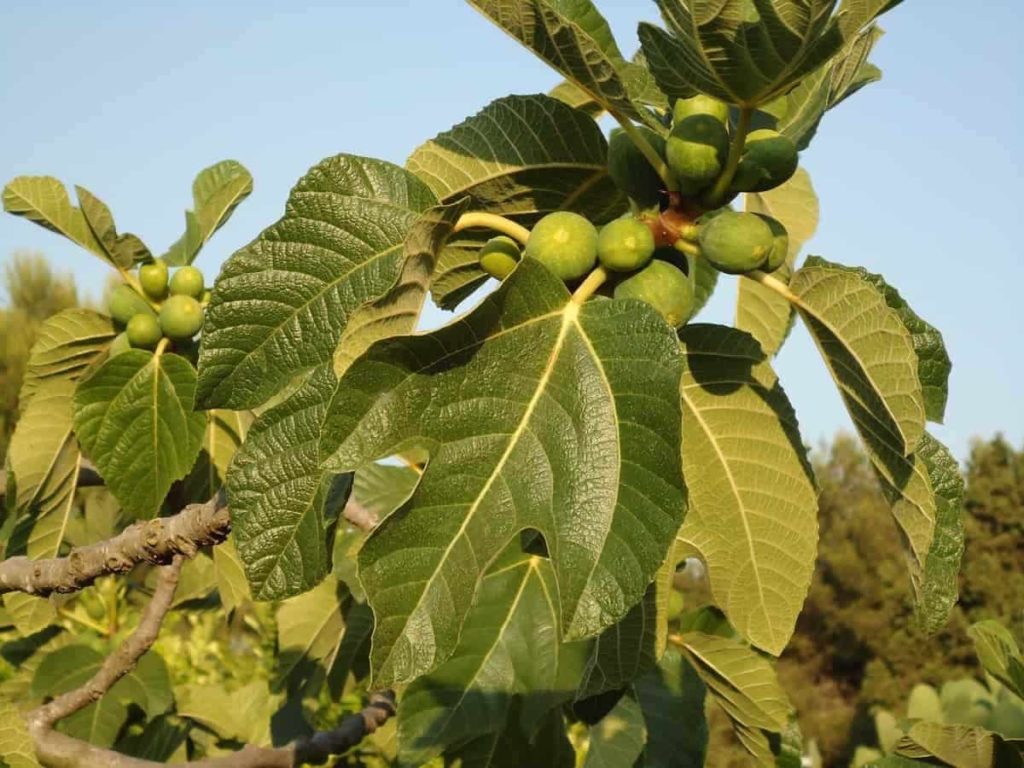
Step 3: Soil and climatic requirements for fruit development
The best soil type for growing Fig trees is deep, non-alkaline clay loam soil. For Fig growth, soil with good drainage and water capacity is necessary, especially alluvial clay loam or medium black soils. Soil pH level should be about 6.0-6.5, and soil depth should be about 1 meter. The ideal temperature for the growth of a Fig tree is 15 to 20°C. Fig trees growing in mild tropical and sub-tropical regions exhibit specific characteristics such as;
- Continuous growth during certain parts of the year;
- Rest during well-marked periods.
- Flowers and fruits during an indefinite period.
- Dormant periods with barren limbs
A dry climate area is ideal for Fig trees during fruit growth and maturation. Fig trees with low temperatures usually produce cracked and low-quality fruits in high humidity. Conversely, trees thrive in hot and dry climates from April-June.
Step 4: Conditions for increasing Fig fruit yield
Although Figs are a sub-tropical species, mature Fig trees are completely cold, up to 15 or 20°C. Those who want to grow Figs outside the normal temperature range should plant them in containers or try hard to protect them in winter. Fig trees can grow up to 15 to 30 feet high in the ground. The canopy can spread evenly. Fig plants must be planted in a well-drained loom with plenty of organic matter but will tolerate weak soils on average.
They tolerate drought once they are established, perhaps because of their wide and extensive root system. The size, shape, skin color, and quality of the pulp are affected by the climate. But standard Figs are grown in dry climates, especially when the fruit is growing and maturing. High humidity with low temperatures usually results in poor fruit distribution and quality.
Step 5: Tips to increase Fig growth
- Cut or remove any structures that shade the Figs. The Fig tree should be exposed to direct sunlight for six hours daily.
- Apply appropriate fertilizers.
- Remove fast-growing trees and shrubs within a 25-foot circle around the Fig tree. These trees and shrubs will Fight the Figs for water and nutrients, stopping their growth.
In case you missed it: Fig Farming (Anjeer) Information Guide
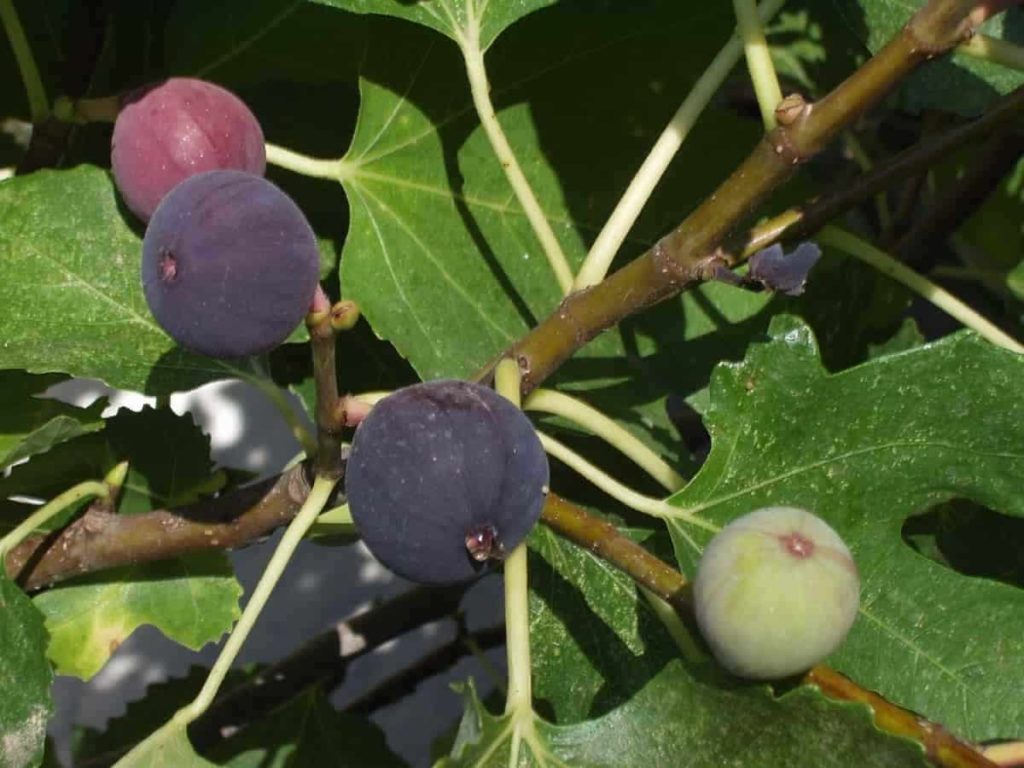
Step 6: Method of propagation will affect fruit quality and size
Many techniques are used to propagate Figs, such as budding, hardwood cutting, air layering, and grafting. However, the most commonly used method of commercial tree propagation is hardwood cutting. The size of hardwood cuttings should be about 20-30 cm long and 0.5 to 0.7 cm thick. These cuttings should be taken from 1- to 2-year-old shoots, especially in July-August.
These cuttings are then placed in a mixture of roots inside a polythene bag. The cuttings can also be uprooted by dipping them in moist sawdust or another medium. It has also been observed that cuttings placed under fog develop roots faster (say 3 to 4 weeks). Propagation of Figs through seeds is not suitable for typing and is probably only used in breeding programs.
Step 7: Fertilizer management for increasing fruit size
The growth of the shoot, which is less than 18 inches, indicates that fertilizer should be applied. Apply to Fig trees 1 to 2 years old with a balanced fertilizer such as 8-8-8 per plant at the rate of 8 ounces in early spring, mid-May, and mid-July. Well-established plants can be fertilized once in early spring if needed.
Fertilizer should not be applied while planting. Instead, apply fertilizer around the plant base at 1 foot from the crown. It is best to fertilize Fig trees only if they show signs of slow growth or leaf yellowing, but there are some exceptions where Fig trees need regular feeding. Potassium is essential during the growing season of the Fig tree.
Step 8: Best time to fertilize Fig tree
Generally, Fig trees are not considered heavy food and do not require much fertilizer. You will only need to fertilize the Fig tree when the below conditions occur;
- Your soil loses nutrients.
- The new growth of your tree seems to have stopped.
If these conditions apply to you, the age of your tree will determine how often and where you will need to fertilize during the growing season. Fig trees need more nitrogen than any other nutrient, and they can usually get all the nitrogen from the soil. Excess nitrogen can lead to poor harvests, fruit splitting, and fruiting.
Figs respond very well to heavy fertilizers and fertilizers (better than most fruit trees). However, be sure not to apply fertilizer too late in the growing season, as doing so encourages new growth that cannot be hardened before winter. Growers who want to grow Figs properly should use large amounts of fertilizer and nitrogen fertilizers such as cottonseeds, soybeans, or alfalfa.
In case you missed it: Top 15 Steps to Boost Cherry Fruit Yield: How to Increase Fruit Size, Quality, and Production
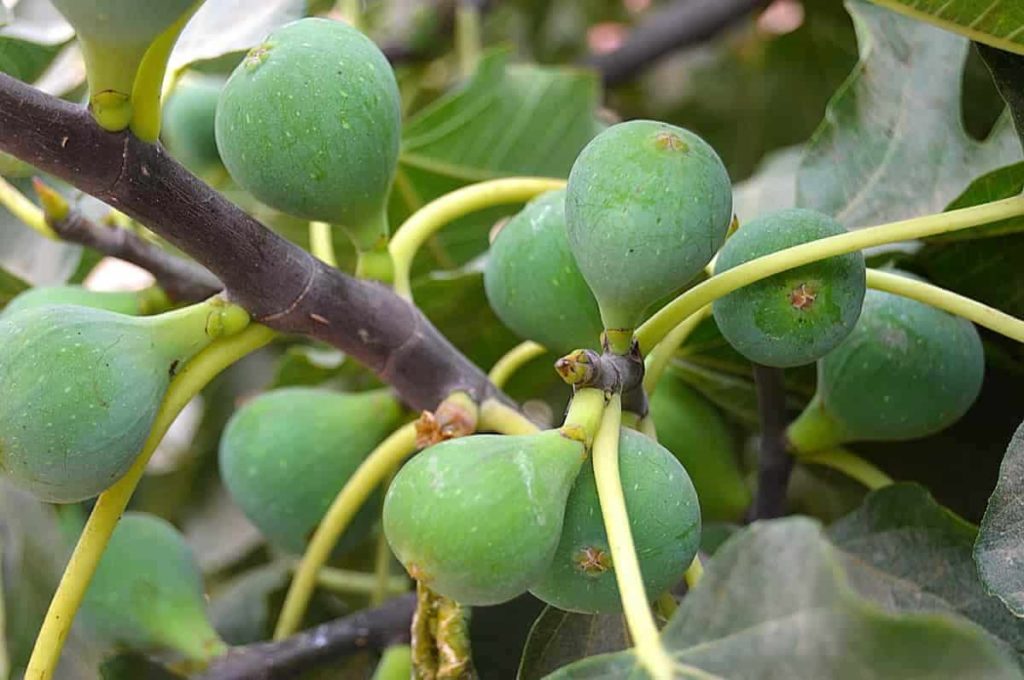
Figs can perform well in soil conditions that are unsuitable for other crops, but recent studies have shown that nutrients affect yield and quality. The nutritional requirements vary according to the variety, but an analysis of the leaves will reveal the fertilizer requirements. Drying types are more sensitive to nitrogen and adversely affect fruit size and color.
Step 9: Reasons for Fig tree did not bear fruit
Fig trees’ main reasons do not grow are poor soil, insufficient water, insect damage, low sunlight, or excessive cooling. To revive a Fig tree, replant it with plenty of organic matter in the soil and a drainage vessel. When the soil is 5-10% dry, water it, expose it to direct sunlight for at least 6 hours, and protect it from cold winds.
Low soil nutrition – The Fig tree grows very slowly and does not bear fruit. The solution is best to add good quality fertilizer to the soil for this problem. Mulch the Fig tree with compost.
Improper feeding – The symptoms are that the Fig tree does not grow very slowly. There is no fruit. For this, fertilize Fig trees with slow-release fertilizer or water-soluble fertilizer.
Step 10: Symptoms and control for fruit drop
There are many reasons why Fig fruits drop from trees. Below are the most common causes of this Fig tree problem.
- Lack of water causes Fig fruit drop – Drought or irregular watering is the most common cause of Fig drop from fruit trees. To correct this, make sure your Figs are getting enough water.
- Lack of pollination – Another reason for a Fig tree not to bear fruit or fruit fall is lack of pollination. Generally, if there is a lack of pollination, the Fig fruit will fall off when it is still very small, as the tree has no reason to grow them as they will not produce seeds without proper pollination. If you suspect that a lack of pollination is causing the Fig fruit to fall from a tree outside, pesticides may be the culprit. Since many pesticides kill all pests, whether beneficial or not, be sure not to use pesticides so that you kill the insects that inadvertently pollute the Fig tree.
- The disease causes Figs to drop – Diseases of the Fig tree, such as Fig mosaic, leaf spot, and pink limbs can also cause Figs to drop. Ensuring that the tree receives adequate watering, fertilizing, and general care will help keep the tree healthy and prevent the disease and Fig drops that accompany these diseases.
- Good water management helps maintain tree health and vigor and reduces fruit drop.
Step 11: Pruning your Fig tree increases fruit size
When they are dormant, prune your trees in the winter, significantly increasing their fruit size. First, remove any dead or broken branches with clean and sterile loopers or hand pruners. After that, clean some branches from the middle of the tree. Finally, remove vertically growing branches because they contain water.
In case you missed it: Top 15 Steps to Boost Dragon Fruit Yield: How to Increase Production, Size, and Quality
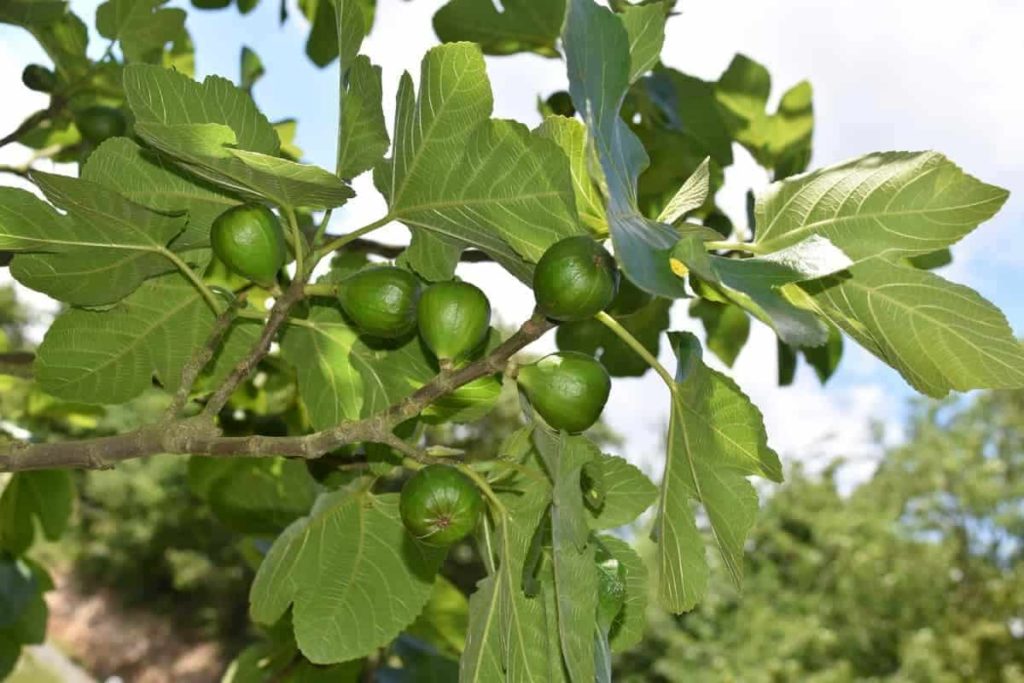
Fruitful branches grow later. Pruning time can play an essential role in determining the later ripening/picking of fruits. Fig trees need small pruning. Remove all dead, diseased, or weak branches during dormant weather to encourage growth.
Step 12: Tips for increasing fruit set
In Common Figs or Adriatic Figs, it has been observed that the tendency of crops varies with the climatic conditions of a particular place. Therefore, there is a possibility of failure of fruit set by a specific type in a specific area. The fruit set can be enhanced by spraying 25 ppm of NAA or IBA on the flowers. Capri Figs should be planted for a practical fruit set for Smyrna Figs. Growth regulators such as Gibberellic Acid (GA) by 30 ml/liter of water promote proper shoot growth and prevent fruit drop in Figs.
Step 13: Irrigation for best fruit production
Water your Fig trees regularly during the growing season. Make sure the soil is not constantly wet or waterlogged. The plants should receive 10 gallons of water from rain or irrigation three times a week during the stay. Ripe Figs should receive 20 gallons of water per week during a drought.
Frequent irrigation, which causes excess moisture in the soil, causes fruit to split. Remember that nutrients are expelled faster from containers. The easiest way is to use a heavy pot (at least 15 gallons) and let the Figs grow 5 to 10 feet tall. Prune tops and roots each year to control size.
Step 14: Pests and diseases management to increase crop yield
Some of the major pests that affect Fig trees are stem borers, beetles, leaf defoliators, scale insects, and Fig flies. Major diseases affecting Fig trees are rust and leaf spots and can be controlled using recommended chemical fungicides. Here are some treatments for preventing diseases in Fig trees;
- These problems mainly occur when the trees are under stress, and good maintenance avoids most problems.
- Tree destruction and replanting of newly recommended varieties.
- Use of neutral copper spray to control the spread of the disease.
- Cut the diseased tree to the ground and grow a new peak from the suckers.
In case you missed it: Top 15 Steps to Boost Blueberry Yield: How to Increase Production, Size, and Quality
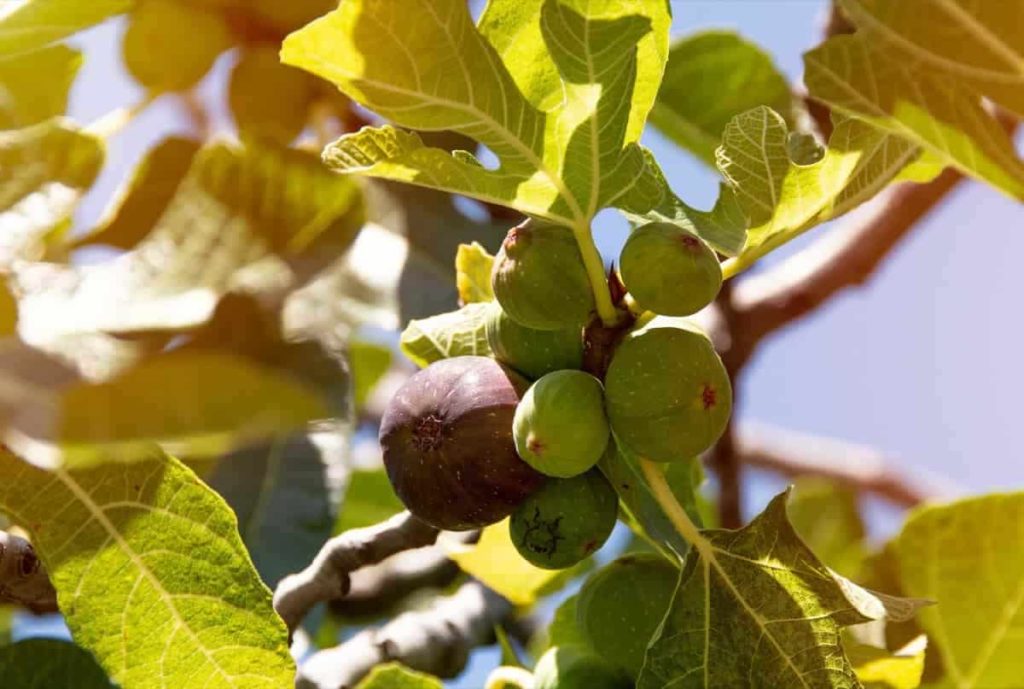
Step 15: Harvesting tips for improving crop growth
Figs are harvested when ripe because ripening does not progress after picking. Some varieties produce one crop of Figs each year, while others produce two crops. Figs usually grow on a new stem every year and ripen months later. Most Fig trees take three to five years to mature.
Before that, Figs can be made with stems where each leaf is attached, but they will not ripen. However, potted Figs can bear fruit quickly. Depending on the area, summer fruits will start ripening in late August and will, depending on cultivation will, continue between 4 and 8 weeks until the end of October. Harvesters usually pick about 100 fruits per hour.
- Economical Aquaculture: A Guide to Low-Budget Fish Farming
- 15 Common Planting Errors That Can Doom Your Fruit Trees
- How to Make Houseplants Bushy: Effective Tips and Ideas
- Innovative Strategies for Boosting Coconut Pollination and Yield
- Pollination Strategies for Maximum Pumpkin Yield
- The Complete Guide to Chicken Fattening: Strategies for Maximum Growth
- Natural Solutions for Tulip Problems: 100% Effective Remedies for Leaf and Bulb-Related Issues
- Revolutionizing Citrus Preservation: Towards a Healthier, Greener Future
- Natural Solutions for Peony Leaf and Flower Problems: 100% Effective Remedies
- Maximizing Profits with Avocado Contract Farming in India: A Comprehensive Guide
- Natural Solutions for Hydrangea Problems: 100% Effective Remedies for Leaf and Flowers
- The Ultimate Guide to Choosing the Perfect Foliage Friend: Bringing Life Indoors
- From Sunlight to Sustainability: 15 Ways to Use Solar Technology in Agriculture
- The Ultimate Guide to Dong Tao Chicken: Exploring from History to Raising
- The Eco-Friendly Makeover: How to Convert Your Unused Swimming Pool into a Fish Pond
- Mastering the Art of Delaware Chicken Farming: Essentials for Healthy Backyard Flocks
- 20 Best Homemade Fertilizers for Money Plant: DIY Recipes and Application Methods
- How to Craft a Comprehensive Free-Range Chicken Farming Business Plan
- Brighten Your Flock: Raising Easter Egger Chickens for Beauty and Bounty
- How to Optimize Your Poultry Egg Farm Business Plan with These Strategies
- Subsidy for Spirulina Cultivation: How Indian Government Schemes Encouraging Spirulina Farmers
- Ultimate Guide to Raising Dominique Chickens: Breeding, Feeding, Egg-Production, and Care
- Mastering the Art of Raising Jersey Giant Chickens: Care, Feeding, and More
- Ultimate Guide to Raising Legbar Chickens: Breeding, Farming Practices, Diet, Egg-Production
- How to Raise Welsummer Chickens: A Comprehensive Guide for Beginners
- How to Protect Indoor Plants in Winter: A Comprehensive Guide
- Ultimate Guide to Grow Bag Gardening: Tips, Tricks, and Planting Ideas for Urban Gardeners
- Guide to Lotus Cultivation: How to Propagate, Plant, Grow, Care, Cost, and Profit
- Agriculture Drone Subsidy Scheme: Government Kisan Subsidy, License, and How to Apply Online
- Ultimate Guide to Raising Araucana Chickens: Breed Profile, Farming Economics, Diet, and Care
- Bringing Hydroponics to Classroom: Importance, Benefits of Learning for School Students
- Ultimate Guide to Raising Polish Chickens: Breed Profile, Farming Economics, Diet, and Care
- Ultimate Guide to Raising Australorp Chickens: Profile, Farming Economics, Egg Production, Diet, and Care
- Silkie Chicken Farming: Raising Practices, Varieties, Egg Production, Diet, and Care
- Sussex Chicken Farming: Raising Practices, Varieties, Egg Production, Diet and Care
- Homemade Feed Formulations for Livestock: Discover Cost-effective Starter to Finisher Feed Recipes